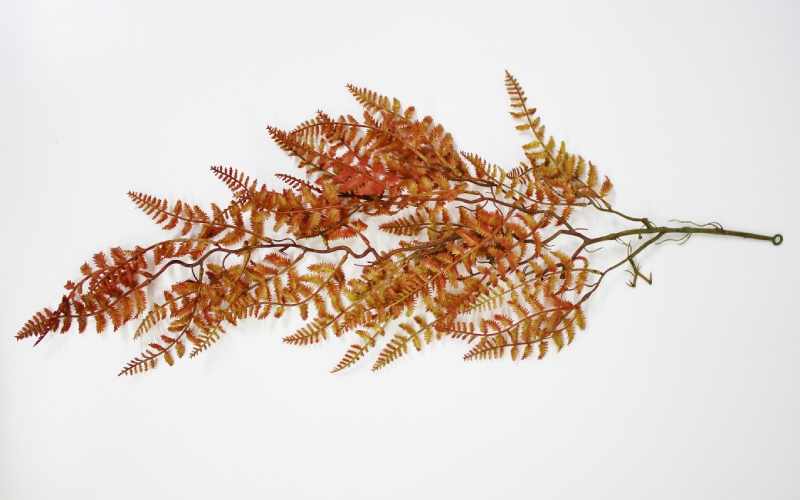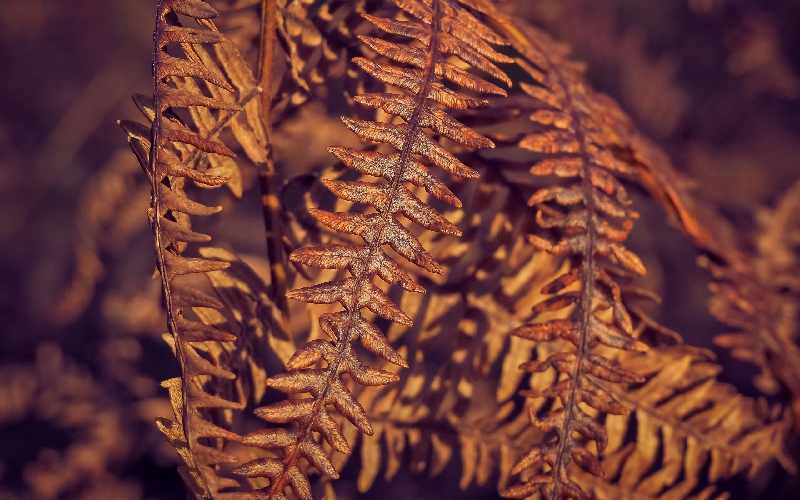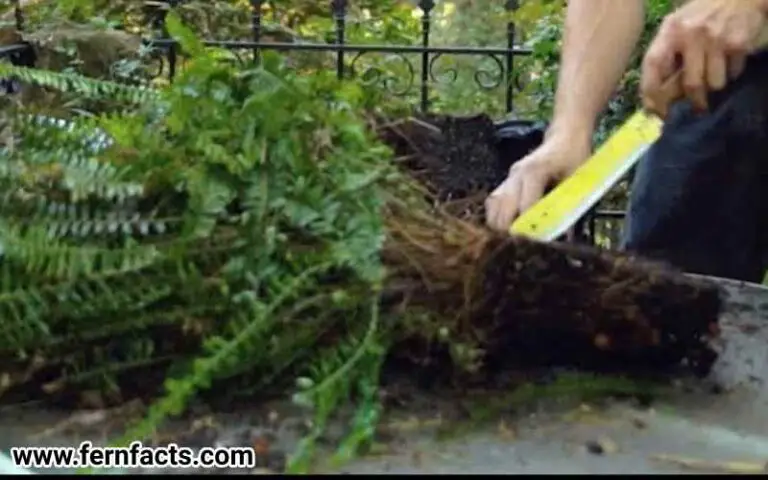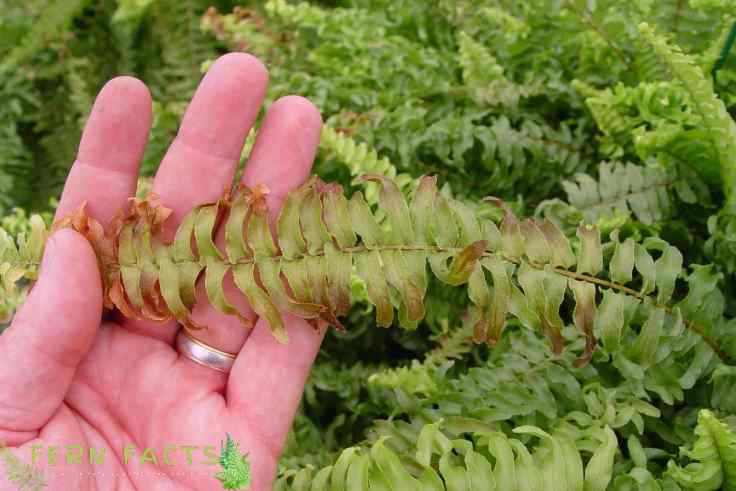Why Has My Fern Gone Brown? – Reason and Remedies
Have your fern plants gone brown? Well, fern turning brown is a very common problem of these plants. There could be some possible reasons why your ferns are getting brown.
Don’t worry, in this article, I am going to uncover the specific reasons for your fern plants getting brown in detail.
Later, I will give you tips and remedies to all those issues so that you can have better comprehensive guidelines so that you can treat your fern plants. Let’s explore the comprehensive guideline.
Understanding Ferns
In order to maintain your fern plants you need to understand your plants first. Without proper comprehensive knowledge, you would not manage your plants properly.
Well, fern is basically a group of vascular plants that contain spores but they don’t have any seeds or flowers on them.
Basically, a fern is a green plant that does not grow any flowers, instead, it has feathery or leafy fronds that produce spores.
Similar to other flower plants, ferns also have roots, leaves, and stems. It’s a very environmentally friendly plant that doesn’t need much attention or care.
It has self-adaptable plants that can grow from their mother plants to new individual baby plants. However, that doesn’t mean they will not require maintenance or caring.
Although it’s a well-adapted plant, there are certain factors like lighting, watering, soiling, fertilizing, humidity, and temperature that are usually relevant for these fern plants just like other plants.

Common Reasons for Ferns Turning Brown
Now let’s look at some common reasons that turn your fern plants brown.
The most possible reasons that make your plants brown could be lack of moisture, improper watering, lighting system, humidity level, nutrient deficiencies, pests, or attacks by diseases. Lest, ‘s explore these reasons in detail.
Lack of Moisture and Improper Watering Techniques
One of the core reasons for your plants that turn brown could be your improper way of watering them.
Sometimes, too much moisture or lack of moisture in the soil makes your fern plants brown. Besides, Plants’ healthy growth depends on their soil texture level.
Under Watering
If you give less water to your fern plants, the soil will be dried out. Likewise, there will be no moisture in the soil. These fern plants require balanced moisture in their soil.
If you give less water to your plants, your plants will be dehydrated. Eventually, there will not be any moisture in the fronds as well. As a result, the dryness of the plants will later turn them brown.
Overwatering
Sometimes overwatering your plants could be another reason that your plants might turn brown. If there is too much water or moisture inside of your plants and doesn’t get a proper drain-out system then the roots will start decaying or rotting.
And so, it will cost your fern with brown fronds, and eventually your plants will die because of rotten roots.
Insufficiency of Light or Overexposure to Direct Sunlight
For fern plants, they need the correct lighting system compared to other plants. All the species of fern require indirect sunlight or sun rays rather than direct exposure to sunlight.
Direct exposure to sunlight can make their soil dry and also reduce the moisture level of the soil quickly. As a result, the fronds of these fern plants become brown and dry.
Even direct sunlight can burn their fronds or make the fronds brittle or crispy. Especially during the summertime, direct rays of the sun might be dangerous for ferns.
Avoiding them from direct sunlight does not mean you should keep your plants in a dark room. If you put your plants into a dark room where they cannot get enough brightness, this can lead your fern plants to have insufficient sunlight. Without proper light, your plants will not grow properly.
Because fern plants require four to six hours of indirect sunlight to grow and to get energy.
Inadequate Humidity Levels
Fern plants need the correct humidity level for their healthy growth. Low humidity can make their fronds or the tip of their fronds brown.
If your bathroom or other indoor fern plants are turning brown, that means the humidity level of their environment is not in balance.
Inside the home, the humidity level is generally 10% lower compared to an open environment. Thus, the low humidity level of the environment can make your fern plants brown, crispy, or dry.
Nutrient Deficiencies or Improper Fertilization
Improper fertilization or nutrient deficiencies can also be another reason for your plants turning brown. Every plant needs some portion of nutrition like magnesium, potassium, nitrogen, and calcium in their soil.
This will help them to grow healthier. But fewer nutrients can also affect their roots and will have an impact on their fronds as well.
Eventually, lack of nutrients or nutrient deficiencies sometimes stops the growth of your plants and your plants can die as well. In the same way, over-fertilizing can also cause your plants to get brown.
As these plants do not need everyday caring and maintenance; sometimes, you over-fertilize your plants’ soil. Overfertilization can give your plants salt burn. Salt burn happens when you over-fertilize your plants.
As it accumulates salt in the soil which might give your plants salt burn. Due to excessive salt burn, your plants’ fronds get dry out or turn brown. Ultimately, it can cause your plant’s death as well.
Pest Infestations or Diseases Affecting Ferns
If you notice any pests like bugs, spider mites, mealybugs, aphids, or parasites around your plants, these could be another reason for your plants turning brown.
Fern are highly sensitive around scale insects and Rhizoctonia blight fungus. These insects and fungi can give you fern diseases.
During those contagious diseases, your fern might turn brown. And so, your plants will get brown spots on the fronds due to these fungus diseases. Ultimately, it can lead your plants to die as well.

Troubleshooting and Remedies
So far, we have discussed the reasons and causes of your fern plants turning brown. Now, let’s look at the remedies for those reasons and how you can troubleshoot these problems.
Tips on Proper Watering Techniques for Ferns
Watering your plants means you are giving your plants their food. Therefore, you need to be very careful about watering your plants by understanding their characteristics and individual species requirements.
Not all the plants will need the same portion of water level to maintain their moisture in the soil. Similarly, for your fern plants, you need to give them the correct amount of fluid in their soil neither too much nor too little.
Give them a gentle round of water until you can observe the water level almost reaches the edges of the pot. Try to give them normal room-temperature water when you water them.
Do not give them cold water because it might give their roots to sudden shock or their roots will be frozen. Try to keep your eyes on the soil pot and check the moisture level.
If you are unable to understand the moisture level, you can use a thumb checkup by pressing your thumb into the soil. If your plant’s soil is too hard or dry then there will be no sign of water inside of the plants.
Then you can put water into the plants. But after pressing your thumbs, if you see water coming out or the soil is still mushy, then you don’t have to pour water on it.
Wait until the water is dry completely, then pour water onto your plants. Ultimately, you can give them water once in 3 to 5 days or once or twice a week depending on the weather conditions or the environment.
the Ideal Lighting Conditions for Ferns
Fern also needs the ideal lighting to have healthy growth to thrive. Make sure you don’t give your plants direct sun exposure or direct sunlight.
They do not need direct sunlight, it can burn their fronds or cause their fronds to get brown. You must put your plants in such a place where they get bright and partial light or indirect sunlight.
So, you can keep your plants beside the window, door, balcony, or bathroom under shade or shelter where they will not be exposed to direct sunlight.
It will prevent your plants from getting burned with excessive sun exposure. If your plants are located outdoors, then you must replant your ferns in shady places or sheltered places where they will not get the direct rays of the sun.
Alternatively, you can also use artificial light or dim light if your plants are in low-light conditions. Try to avoid ordinary light bulbs because they create excessive heat which can burn your plants’ fronds.
But it will be better if you shift your plants to a place where they can get direct sunlight which will brighten the atmosphere.
How to Increase Humidity Levels for Ferns
By increasing the humidity level in the environment, you can save your plants from getting brown. In order to increase or balance the humidity in the environment, you can spray water on your plants or on the fronds of your fern.
By misting the fronds of your plants, you can increase their humidity level. Or else, you can choose a humidifier machine in your plant room for indoor plants. It will also balance the humidity level in the environment of your room.
Later, they also need good air circulation to flourish. So, you can place a fan near your fern plants. This will increase the airflow inside of the room and help leaves to not get brownish.
If your fern plants are located in such a place where they will get less humidity, in that case, you must move your plants to such areas of your house where they will get maximum humidity through the environment.
Likewise, a bathroom, kitchen, beside the window or balcony would be a better option to get them humidity.
The ideal temperature is between 65°F to 75° F which can keep them in a cooler environment without getting direct sun exposure. You can also put a tray of water with pebbles beside your plants if you don’t have a humidifier.
This will also give the dew and damp moisture environment around your plants. Take note that you should not put your plants into direct water to balance the humidity level, it can rot their roots.
So, locate the tray near to your plants not directly into the water.
Fertilizing Ferns and Addressing Nutrient Deficiencies
Over-fertilization can cause your plants to have brown spots. If you somehow over-fertilize your plants and observe your plants are getting brown, then immediately remove the extra fertilizer from the plants.
Or else, you can use any trowel or shovel to remove the excessive fertilizer from the plants. Rather you can also re-pot your plants in a fresh pot with new soil.
For that, you have to detach the soil from your plants, and then wash off your plants. It will also wash away any excessive fertilized chemicals from your plants.
Then you can repot your plants to a new pot that has enough space with a draining system. A larger pot has enough space so they can accommodate themselves properly.
Sometimes, a small pot or small container can also cause your plants brown spots. Because they do not get enough space to grow.
Common Pests and Diseases Affecting Ferns and How to Treat Them
As I have already mentioned, fern plants also get attacked by some insects, pests like spider mites, bugs, aphids, etc.
If you see any bugs or any types of pests near your fern plants, then there are possible reasons for your plants getting brown.
In such cases, you have to check your ferns’ condition regularly and have to use infestations regularly on your plants.
You can also use insecticidal soap or oil on your plants; this will keep your fern away from any kind of pests.
Now talking about fern diseases, just like other plants, ferns also get some diseases from some fungus. Reminder, this fungal disease is mostly contagious which means it will not take time to spread to the fresher fronds of your plants.
You can also remove the affected leaves. But If your plant’s condition is getting worse day by day, then you have to use fungicide medicine according to the label instructions on the medicines.
You can also mix fungicide medicine into the soil and replant your ferns. Besides, try to keep the room temperature of your fern plants under 75°F which will balance the humidity levels.
By giving them good humidity and air circulation, you can prevent your fern plant from getting attacked with those fungal diseases.
Those environments will help your plants to have healthy growth which can protect them from pests, fungi, and bacteria.
Final thought
In the final observation, your fern plants might get brown because of certain factors such as inappropriate lighting conditions, improper way of watering, inadequate humidity levels, nutrient deficiencies or over-fertilization, and being affected by pests or diseases.
However, you can solve those problems by observing your plants properly and also giving them equal amounts of care and attention while balancing all the necessary things such as appropriate watering, sufficient lighting, pest controls, and adequate humidity.
This will prevent your plants from getting brown. By following all the points and remedies mentioned in this article, you can give them a healthy fresh environment where your plants will get a chance to thrive.







